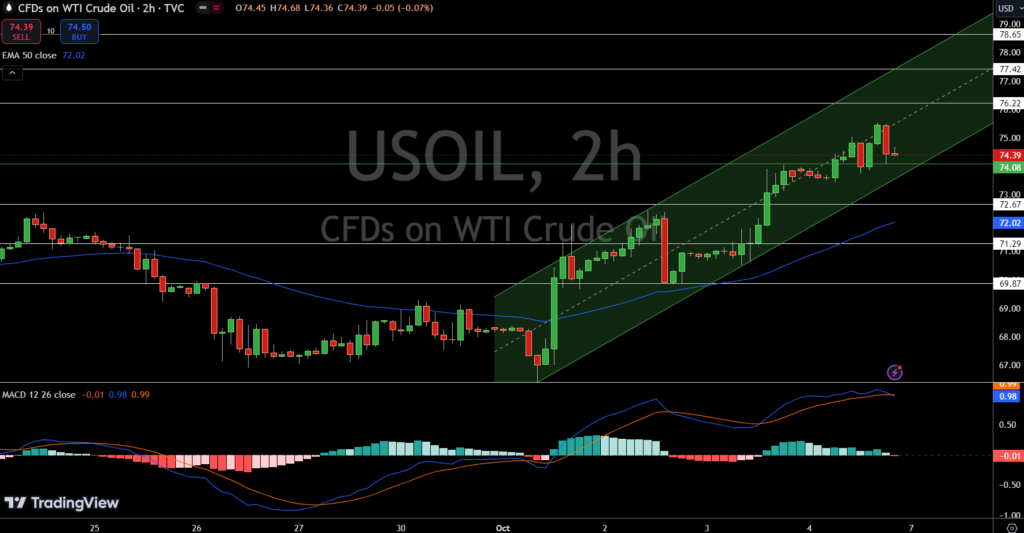Crude oil prices slipped slightly on Friday, with West Texas Intermediate (WTI) trading at $74.40 and Brent Crude at $78.00. The drop comes as the US Nonfarm Payrolls (NFP) report revealed a surprising 254,000 jobs were added in September, well above the expected 150,000.
The stronger-than-anticipated labour market data boosted the US dollar, reducing demand for dollar-denominated commodities like oil.
With the risk of further Middle East tensions, however, traders are cautious. Israel is reportedly seeking US approval to target Iranian oil installations, adding a risk premium to oil prices.
Any disruption in supply from the region could push prices above $100 per barrel, according to Bloomberg Intelligence.
US Jobs Report Sparks Concerns Over Reduced Fed Rate Cuts
The market’s expectations for another sizable interest rate cut from the Federal Reserve (Fed) in November have decreased as a result of the impressive NFP data.
The CME FedWatch Tool indicates only a 10% probability of a 50-basis-point cut, down from 33% earlier this week.
With fewer cuts expected, there could be less economic stimulus to fuel higher energy demand, potentially capping Oil’s rally.
Technical Analysis: Crude Oil Struggles to Maintain Momentum
WTI Crude has been trading within an ascending channel but faced resistance at $75.30. Targets for a clear break above this level include the 200-day SMA at $77.10 and the 100-day SMA at $75.80.

On the downside, immediate support is seen at $72.80 (55-day SMA), with further support at $71.50 and $70.00.
Key Insights:
- Immediate Resistance: $75.30
- Next Resistance: $75.80
- Immediate Support: $72.80
Crude Oil’s outlook hinges on geopolitical developments and further Fed guidance. Should tensions escalate in the Middle East, a move above $77 could be on the horizon. However, if the Fed maintains a cautious stance, oil could revisit support levels below $72.


